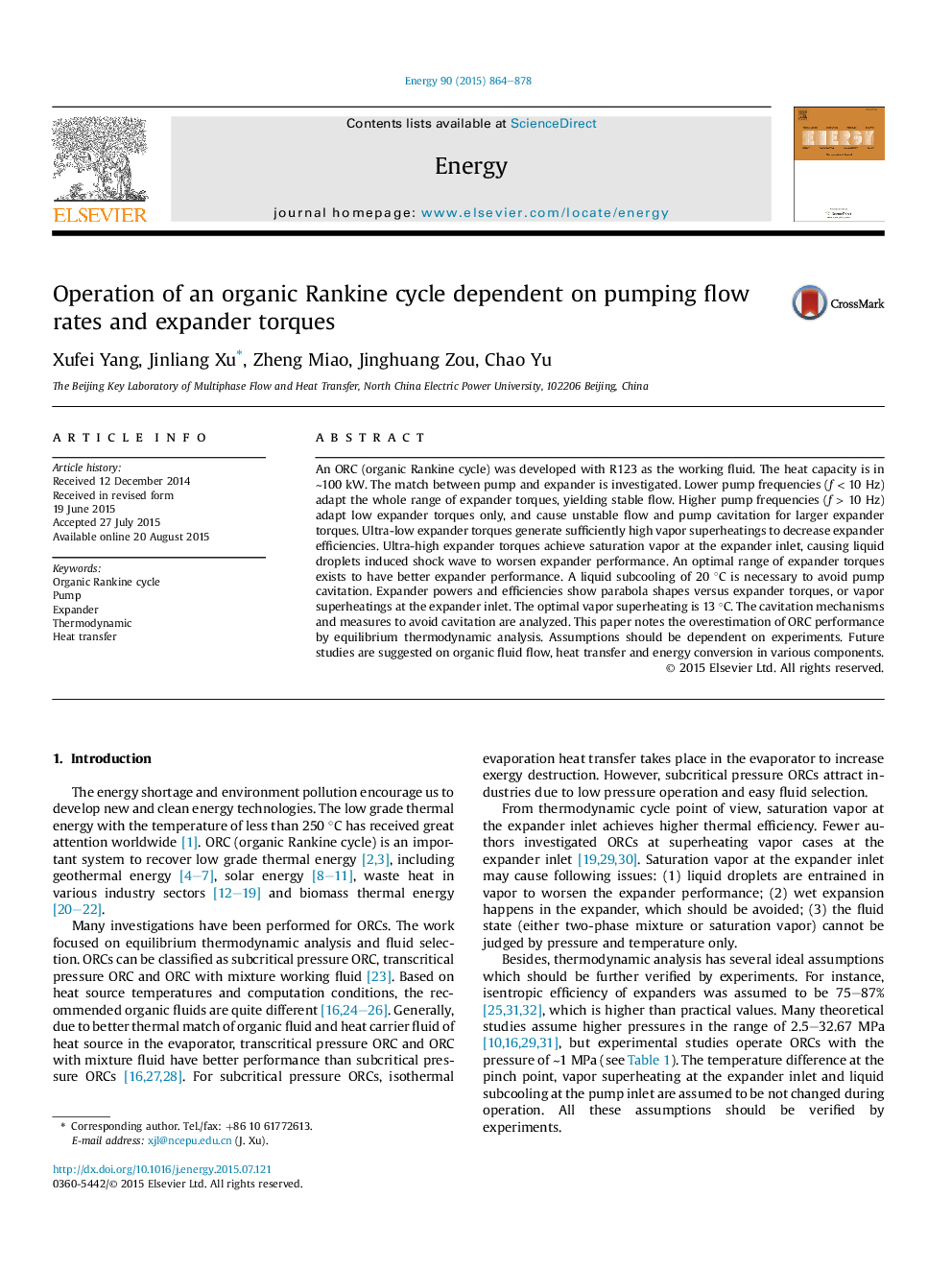| Article ID | Journal | Published Year | Pages | File Type |
|---|---|---|---|---|
| 1731787 | Energy | 2015 | 15 Pages |
•The match between pump and expander is investigated.•A liquid subcooling of 20 °C is needed at pump inlet.•A vapor superheating of 13 °C is necessary at expander inlet.•Cavitation in pumps and expanders are analyzed.•The equilibrium thermodynamics overestimate ORC performances.
An ORC (organic Rankine cycle) was developed with R123 as the working fluid. The heat capacity is in ∼100 kW. The match between pump and expander is investigated. Lower pump frequencies (f < 10 Hz) adapt the whole range of expander torques, yielding stable flow. Higher pump frequencies (f > 10 Hz) adapt low expander torques only, and cause unstable flow and pump cavitation for larger expander torques. Ultra-low expander torques generate sufficiently high vapor superheatings to decrease expander efficiencies. Ultra-high expander torques achieve saturation vapor at the expander inlet, causing liquid droplets induced shock wave to worsen expander performance. An optimal range of expander torques exists to have better expander performance. A liquid subcooling of 20 °C is necessary to avoid pump cavitation. Expander powers and efficiencies show parabola shapes versus expander torques, or vapor superheatings at the expander inlet. The optimal vapor superheating is 13 °C. The cavitation mechanisms and measures to avoid cavitation are analyzed. This paper notes the overestimation of ORC performance by equilibrium thermodynamic analysis. Assumptions should be dependent on experiments. Future studies are suggested on organic fluid flow, heat transfer and energy conversion in various components.
